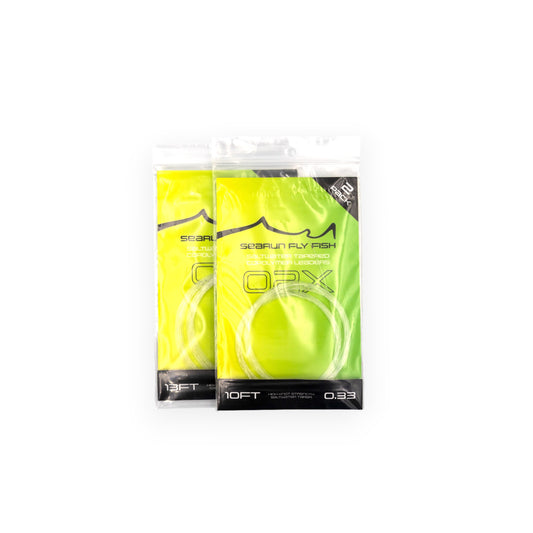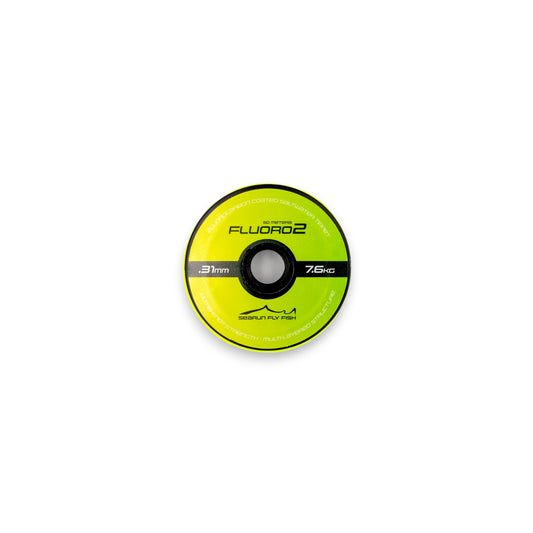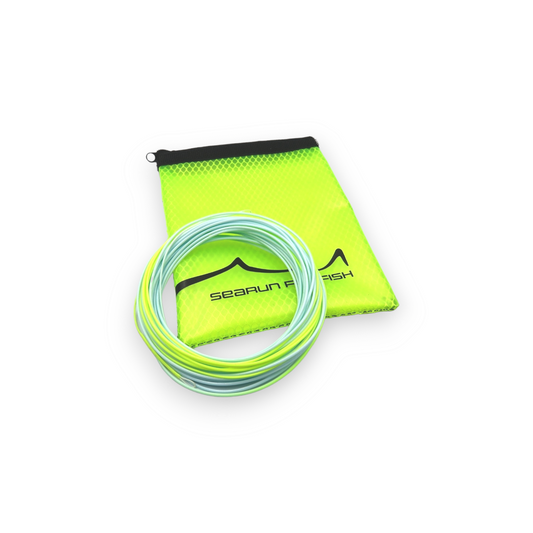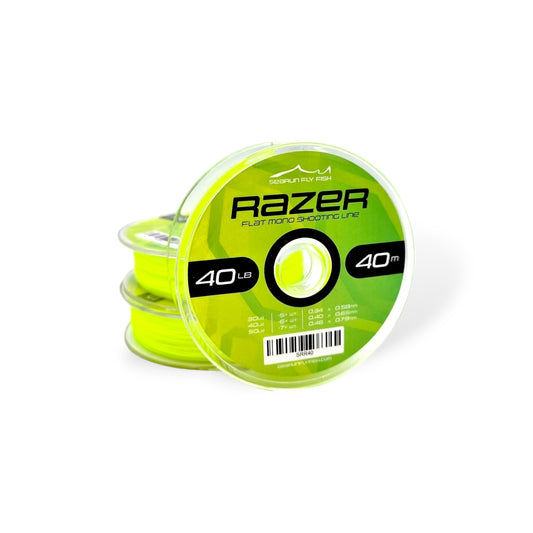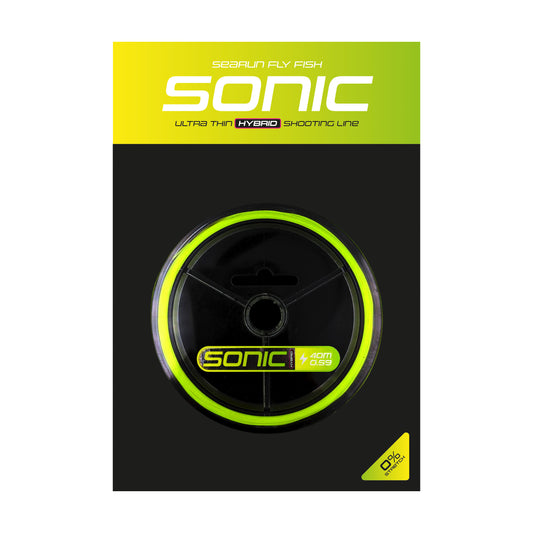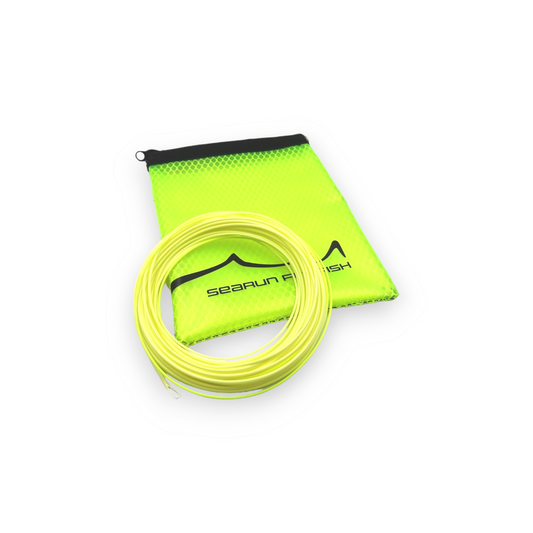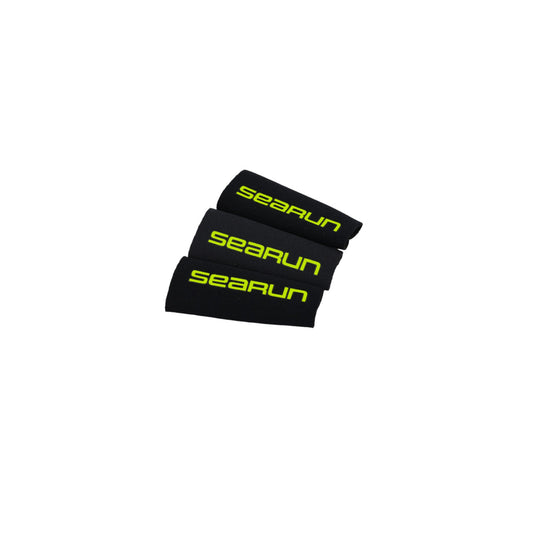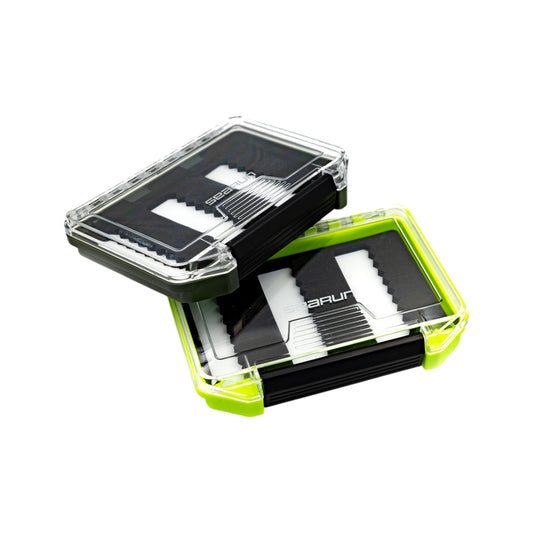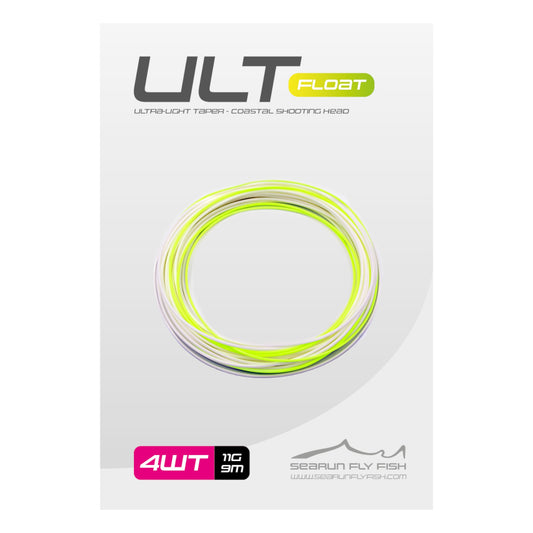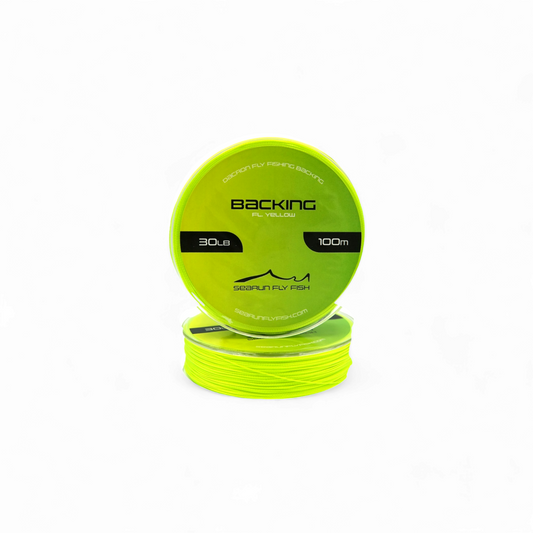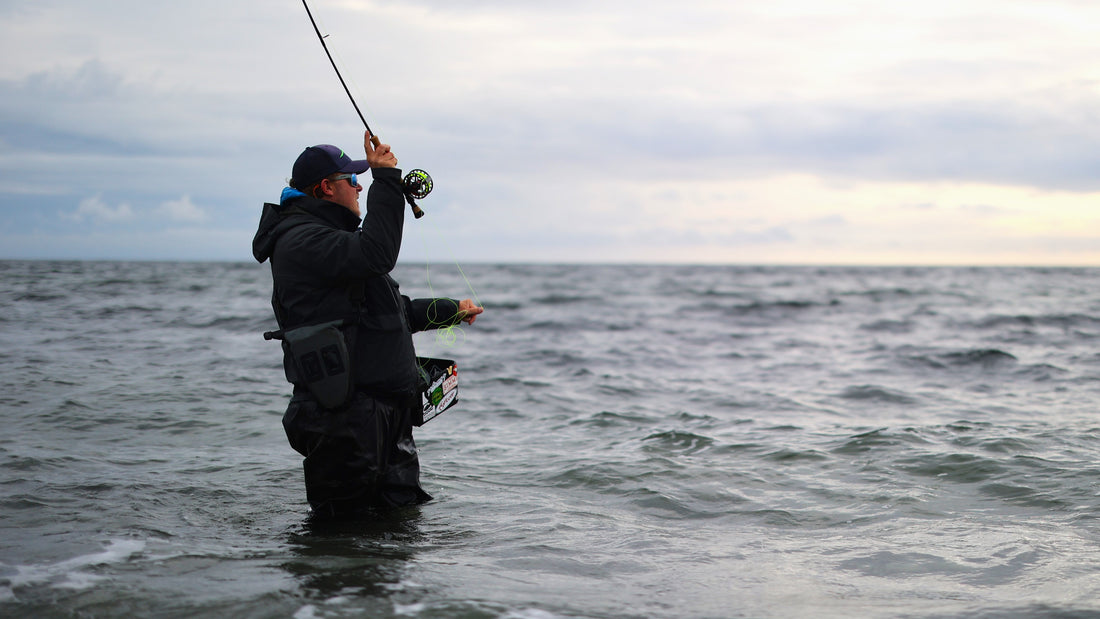
Shooting Lines: Monofilament vs. Coated
Share
When it comes to coastal fly fishing, choosing the right shooting line can significantly impact your casting performance and overall fishing experience. Two popular types of shooting lines are monofilament and coated lines. Each has unique characteristics that affect factors such as stretch, hook setting, grip, memory, water dynamics, and durability. Let’s explore the differences between monofilament and coated shooting lines to help you make an informed decision.
Stretch in Shooting Lines
Stretch plays a crucial role in the performance of shooting lines, influencing how they cast, set hooks, and handle fish. Different types of shooting lines have varying levels of stretch, which can significantly affect your fishing experience. Here’s a breakdown of the stretch percentages for various types of shooting lines:
| Type of Line | Stretch Percentage | Tested Brands |
|---|---|---|
| Coated (Spectra Core) | 0-1% | SEARUN, Monic |
| Monofilament | 5-10% | SA, RIO, SEARUN |
| Coated (Braided Core) | 8-20% | SA, RIO, Vision |
The test was conducted on 12 distinct lines, applying a 3 kg pull force over a 10-meter distance.
- Coated Lines with a Spectra Core have the least stretch, between 0-1%. These lines offer maximum sensitivity and almost no give, making them ideal for situations where immediate hook setting and contact with the fly are crucial. These lines are rare, with the only known manufacturer being the American company Monic. The SEARUN Sonic Shooting Line, featuring a Spectra core with 0% stretch, will be available on the market in 2024.
- Monofilament Lines typically have a stretch of 4-8%. This moderate stretch provides good sensitivity and helps with hook setting while still offering some shock absorption, which can be beneficial when fighting fish.
- Coated Lines with a Braided Core have the highest stretch, ranging from 8-16%. This high stretch can act as a shock absorber during fights, reducing the chance of the line breaking under sudden pressure. However, the increased stretch may reduce sensitivity, making it harder to detect subtle bites and requiring a more forceful hook set.
Monofilament Shooting Lines
Monofilament shooting lines are made from a single strand of nylon or other similar materials. These lines are known for their smoothness and thin diameter, offering several distinct advantages:
- Stretch: Contrary to popular belief, monofilament lines actually have less stretch than many coated lines. This lower stretch means that the line is more sensitive, allowing anglers to feel even the slightest nibbles from fish. Because of this sensitivity, monofilament lines provide excellent feedback, which is crucial for detecting subtle bites or ensuring a strong hook set.
- Hook Setting: Due to the reduced stretch, monofilament lines transmit energy more directly to the hook, making it easier to set the hook quickly and effectively. This direct connection can be a significant advantage when targeting species that require a strong and immediate hook set.
- Grip: Monofilament lines tend to be slippery, which can affect grip. While they shoot through the guides with ease, making long casts more effortless, this slipperiness can be challenging when handling the line with wet or cold hands. To improve line control, we recommend using products like Grip Guard or wax to enhance grip, especially in coastal environments where moisture is constant.
- Memory: One of the common drawbacks of monofilament lines is their tendency to develop memory, meaning they can retain the shape of coils after being wound on a reel for some time. However, a good soft mono like our SEARUN Razer line has very little memory, reducing the occurrence of coils or tangles. This makes it an excellent choice for anglers looking to minimize maintenance and maximize time on the water.
- Water Dynamics and Control: Monofilament lines are thinner and cut through water more effectively, providing better control and accuracy, especially in windy conditions. Because mono lines have less resistance in the water, this can affect your presentation by allowing flies to sink faster or drift differently, which may or may not be desirable depending on your fishing strategy. However, in coastal fly fishing, the wind often aids in the presentation, making monofilament lines particularly advantageous for reaching distant fish.
- Shootability: The primary reason we recommend monofilament lines for coastal fly fishing is their superior shootability. The smooth, low-friction nature of monofilament allows it to shoot through the guides with minimal resistance, enabling longer casts with less effort. This feature is especially useful when covering lots of water to find active fish or when fishing deeper waters, as the thin profile of mono lines allows your fly to sink more quickly and naturally.
Coated Shooting Lines
Coated shooting lines, often made with a braided nylon or monofilament core and a polymer coating, offer a different set of characteristics that can enhance certain aspects of fly fishing:
- Stretch: Many coated lines have more stretch than monofilament lines, which can act as a shock absorber when fighting fish, reducing the risk of the line snapping under sudden pressure. However, this added stretch can sometimes reduce sensitivity, making it harder to detect soft bites and requiring more effort to set the hook.
- Hook Setting: The additional stretch in some coated lines may require a more forceful hook set, as the stretch can absorb some of the energy transferred during the hook set. Anglers targeting fish with softer mouths may find this beneficial, as it prevents ripping the hook out too aggressively.
- Grip: Coated lines often feature textured surfaces or coatings that enhance grip, especially when the line is wet. This increased grip can provide more control during casting and retrieving and make it easier to handle the line in various weather conditions, which is particularly beneficial in coastal environments where moisture and salt are constant factors.
- Memory: Coated lines typically have less memory than monofilament lines, meaning they are less likely to retain coils after being stored on a reel. This characteristic allows for smoother and more consistent casting, with fewer tangles and knots.
- Loading Zone and Durability Issues: A notable problem with coated lines is that they can develop cracks and tears in the coating, particularly in the loading zone—the section of the line that experiences the most wear during casting. These cracks and tears often occur due to the weight and stretch applied to the material over time. For many coated shooting lines, especially weight-forward (WF) lines, the coating can wear down and tear within just 100 hours of use. When this happens, you may need to cut the line and make new loops, which is not intuitive for beginners. Additionally, homemade loops are typically only ideal on lines with a braided core, making them less suitable for other types of cores.
- Presentation Control: Coated lines help with presentation because they provide a bit of resistance in your cast, which can slow the roll of your fly loop at the end. This resistance allows for more control over the placement and speed of your fly, which can be advantageous when trying to present a fly delicately or accurately in various fishing scenarios, particularly in challenging coastal waters.
Disadvantages of Thin Diameter Coated Lines
Thin diameter coated lines, including nymph lines commonly used as shooting lines, are increasingly favored by coastal fly fishers due to their light feel and ease of casting. However, these lines have several significant disadvantages that can affect their performance and longevity, particularly in challenging coastal conditions. The only thin coated shooting lines that tend to work is spectra/kevlar core coated shooting lines which have a breaking strength of 20-40lb in low diameter models.
A critical disadvantage of thin diameter coated lines, especially those used as nymph lines for shooting, is their low breaking strength. Typically, these lines have a true breaking strength of just 2.5 to 3.5 kg (about 5.5 to 7.7 pounds), which is insufficient for handling the powerful, sudden runs of larger fish. This low strength makes the lines more susceptible to breaking under pressure, particularly when trying to control or land a strong fish quickly or getting stuck in weeds.
Choosing the Right Shooting Line
Ultimately, the choice between monofilament and coated shooting lines depends on personal preference, fishing conditions, and the specific needs of the angler. However, for coastal fly fishing, we recommend monofilament lines. The superior shootability of mono lines makes them ideal for covering lots of water and effectively fishing deeper areas, allowing your fly to sink quickly and naturally. With the right products to improve grip, such as Grip Guard or wax, and using soft mono lines like our SEARUN Razer line, anglers can enjoy reduced memory and fewer tangles, making for a more enjoyable fishing experience.
By understanding the differences in stretch, hook setting, grip, memory, presentation control, and potential durability issues between monofilament and coated shooting lines, you can make a more informed choice that enhances your coastal fly fishing experience. Happy fishing!


